mobile View, to the German Version tap the flag


- Republic of Chile
- presidial republic
- own name: República de Chile
• Flags
• Historical Flags
• regional Flags:
– Mapuche (Araucanians)
– Easter Island
• Meaning/Origin of the Flag
• Coat of Arms
• Meaning/Origin of the Coat of Arms
• Aircraft Roundel
• Map
• Numbers and Facts
• History
• Origin of the Country's Name
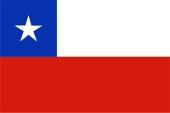
National, merchant and naval flag,
ratio = 2:3,
Source, by: Corel Draw 4





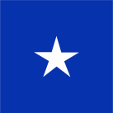
Naval jack,
ratio = 1:1,
Source, by: Flags of the World



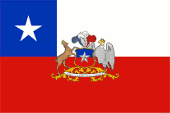
Flag of the President,
ratio = 2:3,
Source, by: Flaggen und Wappen,
Flags of the World




Flag for Emissaries and Division Generals,
ratio = 2:3,
Source, by:
Die Welt im bunten Flaggenbild,
Flags of the World




Flag for Secretaries, Director-Generals of Provinces and Brigade Generals,
ratio = 2:3,
Source, by:
Die Welt im bunten Flaggenbild,
Flags of the World





1535–1785,
Flag of the Viceroyalty of Peru and naval and war flag,
Source, by: Wikipedia (EN)




1785–1817,
Flag of Spain and flag of the Viceroyalty of Peru,
Source, by:
World Statesmen



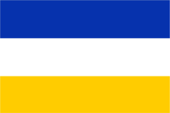
1812–1814,
Flag of the "Patria Vieja",
Source, by: Flags of the World



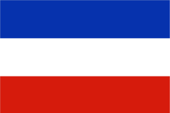
1817,
National flag,
Source, by: Flags of the World



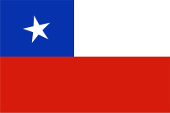
1817–1826,
National, merchant and naval flag,
ratio = 2:3,
Source, by: Wikipedia (ES)




1826–1854,
National and merchant flag,
ratio = 2:3,
Source, by:
Wikipedia (ES)




18th cent.,
historical flag fo the Araucan Nations (Mapuche),
Source, by: Mark Twain: "Reise um die Welt", 1897, Wikipedia (ES)




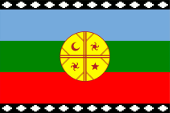
Flag fo the Mapuche Indian people,
Source, by: Huhsunqu, Public domain, via Wikimedia Commons



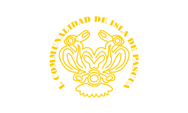
Flag of Easter Island, (← for Details, click or tap here),
ratio = 3:5,
Source, by: World Statesmen




The today's flag of Chile was introduced in 1854. It shows two horizontal stripes in white and red, and in the white stripe near the pole a blue square with a white five jagged star. The red stand for the blood, which was shed for the achievement of the independence, the white for the snow on the peaks of the Andes, and the blue for the heaven above Chile. The white star is interpreted as freedom star, and stands for the honor of the land and the progress, too. The flag pictures a simplifyed form of the US-american "Stars and Stripes", and should, after its designing by the US-american painter Charles Wood, be given in order by the war minister Zenteno. Between 1817 and 1854, the blue top corner was a rectangle, not a square, and the star was slightly rotated. For civil use there was an additional version of the flag between 1826 and 1854, which only showed a plain blue upper corner without a star. The colors given for the flags today are: red = pt 485, blue = pt 286 and white.
The first Chilean flag was introduced on 27th of October in 1812, after the Spanish rule was eliminated after riots for the first time. It showed three horizontal stripes in blue, white and yellow. In 1814 Spain had the country but again under its control. A second time Chile shook off the Spanish rule in 1817, and introduced a new flag. It showed three horizontal stripes in blue, white and red, and was in use until the introduction of the today's flag for one year.
Source:
Flaggen Wappen Hymnen,
Alle Flaggen alle Staaten,
Wikipedia (ES),
Flags of the World

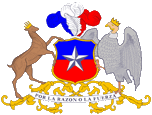
Coat of arms of Chile,
Source, by: Corel Draw 4

The coat of arms was adoped in 1834, and shows the colors of the flag. It was designed by war-minister Zenteno. Below the shield is placed a banner with a saying, from the times of the fight against the Spanish descending motto: "Por la Razon o la Fuerza" => "With reason or violence". Shield holders are a deer of the Andes (Huemul) and a condor.
Source: Flaggen Wappen Hymnen

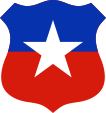
Aircraft roundel of Chile,
Source, by: Wikipedia (EN)

Chilean aircraft roundel for Naval Aviation,
Source, by: Wikipedia (EN)

Location:

Source: CIA World Factbook
Map of the country:
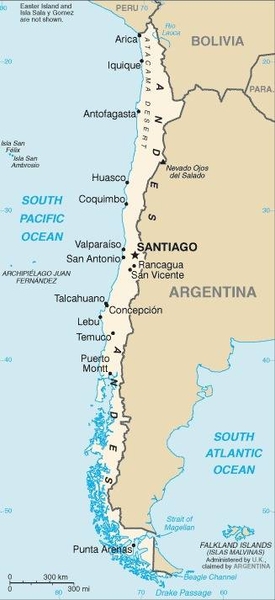
Source: CIA World Factbook

Area: 291.931 square miles (including the Juan Fernández Islands, the Desventuradas Islands, Sala y Gómez and Easter Island => total 123 sq.mi.)
Inhabitants: 17.574.000 (2017), thereof ca. 60% Europeans (thereof ca. 90.000 Germans), ca. 30% Mestizos, ca. 7% native Indians (Araucanians)
Religions: 57% Roman Catholic, 13% Protestant, 25% Non-religious
Density of Population: 60 inh./sq.mi.
Capital: Santiago de Chile, 5.220.161 inh. (2017)
official Language: Spanish
other Languages: Mapuche, Aymara, locally German (e.g. Puerto Montt)
Currency: 1 Chilean Peso (chil$, CLP) = 100 Centavos
Time Zone: GMT – 4 h (on the mainland)
Source: Wikipedia (D),
Wikipedia (ES)

13.000 B.C. · First settlement
1470–1532 · the north of today's Chile is part of the Inca Empire
1520 · the Portuguese seafarer Ferdinand Magellan discoveres the Strait of Magellan in today's southern Chile
1535–1540 · Spanish conquest under Diego de Almagro
1541 · Pedro de Valdivia founds Santiago
1542 · annexation of the north of today's Chile to the Viceroyalty of Peru as a province,
Araucania – the south of today's Chile – remains under the domination of the Indians (Araucana)
1609 · Chile becomes a captaincy general within the viceroyalty of Peru
1778 · Chile becomes an independently captaincy general under the Spanish crown
1808 · Joseph, the brother of Napoléon Bonaparte, ascends the Spanish throne
1810 · Chile declares loyal to the deposed Spanish King Ferdinand VII. and proclaimes themselves an autonomous province within the Spanish kingdom, and a little later as fully independent ("Patria Vieja")
1813–1814 · Spanish War of Independence, restoring of the the legitim monarchy and attempt to recover Chile by military means
1818 · anti-Spanish revolt, in the Battle of Maipú defeat of the Spanish
12th of February in 1818 · Chile declares its independence from Spain
1836–1839 · victorious war against Bolivia and Peru
1861 · conquest of Araucania
1865–1871 · Spanish-South American War
1879–1884 · victorious war against Bolivia and Peru (Niter War) => win of territorities in the north
1883 · complete annexation of Araucania
1891 · civil war
1893–1902 · border dispute with Argentina
1924–1932 · dictatorship
1934 · uprising of the Mapuche Indians
1944 · entry into the Second World War on the side of the Allies
1945 · founding member of the UN
1948 · accession to the OAS
1970 · electional victory of the Unidad Popular (UP), a party with a socialist program, Salvador Allende becomes president
1973 · military coup, led by General Augusto Pinochet
1973–1989 · Pinochet dictatorship
1978 · border dispute with Argentina about the islands Lennox, Picton and Nueva, in the Beagle Channel
1984 · Peace treaty between Chile and Argentina, the Beagle Channel Islands finally come to Chile
Source: Wikipedia (D)

The name "Chile" comes from the language of the Aymara, an native indian tribe in the north of the country. The word means "end of the country." Another theory sees an origin in the word "tchili" out of the Inca language Quechua, what means: "snow". Both are indications of the prevailing geographic peculiarities here. The south of the country was formerly called Araucania. The Araucana are the indigenous natives of some southern regions of America. They belong to different nations: Picunche, Mapuche, Huilliche and Pehuenche.
Source:
Handbuch der geographischen Namen,
Wikipedia (D),
Discovery '97


![]()













































